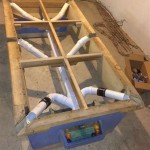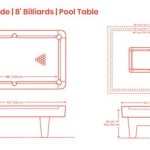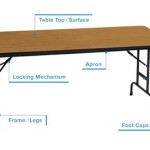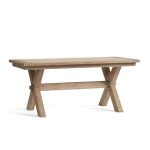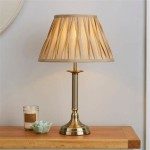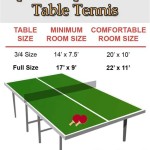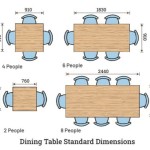The Enduring Appeal of Vintage Telephone Tables and Chairs
Vintage telephone tables and chairs represent a fascinating intersection of design, technology, and social history. These pieces of furniture, once ubiquitous in homes across the developed world, offer a tangible link to a bygone era when the telephone was a central fixture in domestic life, not a pocket-sized device carried everywhere. Collecting and preserving these items is not merely an exercise in nostalgia; it’s an exploration of changing communication practices, evolving interior design trends, and the enduring qualities of craftsmanship.
The evolution of the telephone table is intrinsically linked to the development and adoption of the telephone itself. In the late 19th and early 20th centuries, telephones were expensive and relatively cumbersome. They required dedicated space, often wired directly into a wall. This need gave rise to specialized furniture designed specifically to accommodate the telephone and its associated paraphernalia, such as directories and notepads. Early telephone tables were typically small, simple wooden stands designed for functionality above all else. As telephones became more commonplace, and as interior design styles evolved, telephone tables became more elaborate and incorporated features such as drawers, shelves, and attached seating.
The inclusion of a chair, often a small, backless stool or a more formal upholstered seat, represents a key element of the telephone table design. Telephoning, in its early days, was often a more deliberate and time-consuming activity than it is today. Calls were frequently placed through an operator, and conversations tended to be less hurried. The chair provided a comfortable place to sit while making or receiving calls, enhancing the overall user experience. The combination of the table and chair transformed the act of telephoning into a more formal and civilized affair, reflecting the telephone's status as a significant technological advancement.
Understanding the Key Characteristics of Vintage Telephone Tables
Vintage telephone tables are not a monolithic category. They encompass a wide range of styles, materials, and design features, reflecting the diverse tastes and economic circumstances of the people who owned them. Identifying the key characteristics of these pieces is essential for collectors and enthusiasts seeking to understand their history and value.
One important factor to consider is the period in which the table was manufactured. Early telephone tables, dating from the late 19th and early 20th centuries, often exhibit design influences from Victorian or Arts and Crafts movements. These tables tend to be made from solid hardwoods such as oak, mahogany, or walnut, and may feature intricate carvings, turned legs, and other decorative details. Tables from the mid-20th century, particularly those produced in the 1940s, 1950s, and 1960s, often reflect the streamlined aesthetics of the mid-century modern movement. These tables may feature simpler, more geometric designs, and may incorporate materials such as plywood, laminate, and metal.
The design of the chair is also a crucial element. Some telephone tables feature attached chairs, which are physically connected to the table and cannot be moved independently. These chairs are often small, backless stools, designed for minimal intrusion on the surrounding space. Other telephone tables are designed to be used with separate chairs, allowing for greater flexibility in placement and use. These chairs may range from simple wooden stools to more elaborate upholstered armchairs, depending on the style and intended use of the table. The upholstery of the chair can also provide valuable clues about the table's age and origin. Original upholstery, if preserved, can offer insights into the fabrics and colors that were popular during a particular period.
The functional features of the table are also important to consider. Many vintage telephone tables include drawers or shelves for storing telephone directories, notepads, pens, and other accessories. The presence and design of these features can provide insights into the table's intended use and the priorities of its original owner. Some tables may also include built-in telephone cradles or other specialized features designed to accommodate the telephone itself. The size and shape of the table can also vary considerably, depending on the available space and the intended location of the table within the home.
The Materials and Construction Techniques Employed in Vintage Telephone Tables
The materials and construction techniques used in vintage telephone tables reflect the technological advancements and economic conditions of the time in which they were produced. Understanding these aspects of the furniture can provide valuable clues about its age, origin, and quality.
Solid hardwoods, such as oak, mahogany, walnut, and cherry, were commonly used in the construction of early telephone tables. These woods were prized for their strength, durability, and beauty, and were often chosen for their ability to showcase intricate carvings and other decorative details. The use of solid hardwoods is a hallmark of high-quality vintage furniture, and can often indicate that a piece was made by skilled craftsmen using traditional techniques. The joinery used in the construction of these tables is often of a very high standard, with techniques such as dovetail joints, mortise-and-tenon joints, and tongue-and-groove joints used to create strong and durable connections.
As technology advanced and new materials became available, telephone tables began to incorporate plywood, laminate, and metal. Plywood, a composite material made from thin layers of wood veneer glued together, offered a cost-effective alternative to solid hardwoods and allowed for the creation of furniture with curved or shaped surfaces. Laminate, a synthetic material made from layers of paper or fabric impregnated with resin, provided a durable and easy-to-clean surface that was often used for tabletops and shelves. Metal, particularly steel and chrome, was also used in the construction of telephone tables, especially those produced in the mid-century modern era. Metal was often used for legs, frames, and other structural components, adding a touch of industrial chic to the design.
The finishes used on vintage telephone tables can also provide valuable clues about their age and origin. Early tables were often finished with varnish, shellac, or wax, which provided a protective coating while allowing the natural beauty of the wood to shine through. Mid-century modern tables were often finished with lacquer or paint, which provided a more durable and contemporary look. The condition of the finish can also be an indicator of the table's history and how well it has been cared for over the years. Original finishes, even if slightly worn, can add to the character and value of a vintage telephone table.
The Social Significance and Collectibility of Vintage Telephone Tables
Beyond their aesthetic appeal and functional design, vintage telephone tables hold significant social and historical value. They represent a tangible connection to a time when the telephone was a central hub of communication, and when the act of telephoning was a more formal and deliberate activity. Collecting these pieces is not merely an exercise in acquiring vintage furniture; it’s an opportunity to explore the evolving role of technology in society and the changing patterns of social interaction.
The telephone table served as a focal point for communication within the home, a place where families gathered to make and receive calls, share news, and connect with the outside world. The design of the table often reflected the social status and personal taste of the family who owned it, and the table itself became a symbol of modernity and progress. The presence of a telephone table in a home signified that the family was connected to the wider world, and that they were participating in the technological revolution that was transforming society.
The collectibility of vintage telephone tables is driven by a number of factors, including their historical significance, their aesthetic appeal, and their relative rarity. As these pieces become increasingly scarce, their value tends to increase, making them attractive investments for collectors and enthusiasts. The condition of the table, its originality, and its provenance all play a role in determining its value. Tables that are in good condition, that retain their original finishes and upholstery, and that have a documented history are generally more valuable than those that have been heavily restored or modified.
Preserving vintage telephone tables is important not only for their intrinsic value as objects of design and craftsmanship, but also for their role in preserving a tangible link to the past. These pieces offer a unique window into a bygone era, providing insights into the social, technological, and cultural forces that have shaped the modern world. By collecting and caring for these objects, we can ensure that their stories continue to be told, and that future generations can appreciate their significance.

Vintage Telephone Table Chair Ch 057 Dahlia

Antique Telephone Table With Seat Or Gossip Bench Vintage

Vintage Phone Table Gossip Bench Duncan Phyfe Writing Desk Harp Chair Entryway End Furnitur Wood

Vintage Telephone Chair And Table Combination The Oaks Of Montgomery Antiques

Vintage Phone Table Gossip Bench Fox Hunting Wood Side Entryway End Furniture Chair

1950s Vintage Telephone And Gossip Bench Chairish

Antique French Phone Table And Matching Chair Ornate Carvings Mahogany Ruby Lane

Vintage Telephone Seat With Side Table And Drawer Painted Antique Farmhouse Furniture
Vintage Art Deco Telephone Phone Gossip Table Chair

1930s Vintage Phone Table Chair Fabfind Furniture Antique 1930 Telephone Tablechair Com

